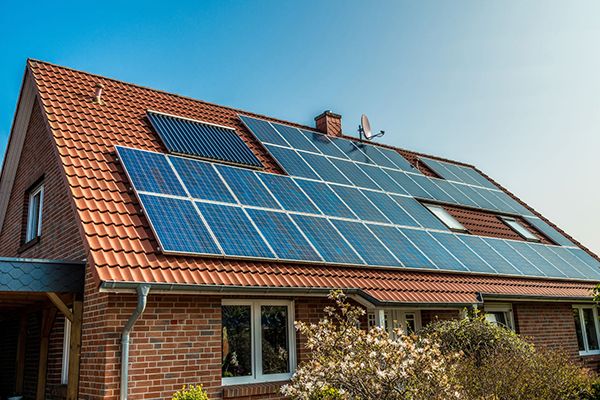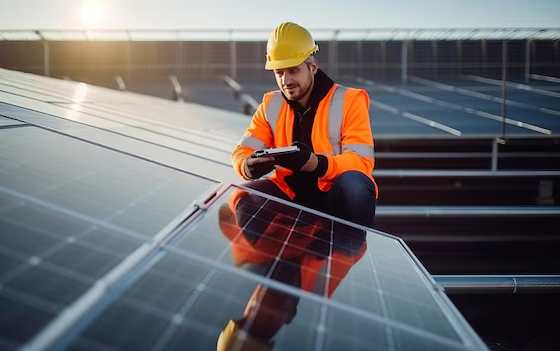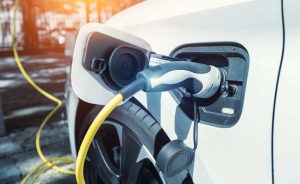Solar panels produce the best when there is direct sunlight. It does not mean that they don’t produce when there is no direct sunlight. It functions by converting photons to electric current. As direct and indirect sunlight carry photons, solar panels can work in both conditions.
What time do solar panels get maximum output?
Solar panels need 1000 W/m2 of sunlight to reach their peak output. It is available only when there is direct sunlight. Solar panels work with maximum efficiency when the sun is shining.
It produces more electricity during the day when direct sunlight is maximum. In its absence, there will be only a reduced output from the panels. There is electricity generation even during winter and cloudy days. A peak sun hour is the amount of energy in sunlight that a solar PV panel receives over a day.
Certainly, a solar system needs an average of four peak sun hours per day to make the system worthwhile. It is equivalent to 4000 watt-hours of cumulative solar radiation over a day. Small photovoltaic cells are are the main components of a solar panel. These cells are held together by durable silicone. Each side will have both positive and negative charges, which allows the proper electrical currents to bounce off each other. These cells inside the panel convert photons into usable energy. Mirrors and reflectors in the solar panels provide more exposure to sunlight. This increases the number of photons absorbed and converted to usable electricity.
Use of battery backup in a solar system
Irrespective of the weather, solar panels produce clean energy most of the time, with the exception of shade and after sunset. There is no electricity generation at night. A good battery storage system can solve this problem. A battery storage system store excess energy produced during daytime and use it later when there is comparatively lesser or no production at all. Therefore, a solar system with storage makes one fully energy independent.
Solar panels do work in shade. However, shaded solar panels produce less power than those in direct sunlight. Overgrown trees, foliage, neighboring solar panels, parts of the roof like a chimney or dormer can all be sources that block direct sunlight from reaching certain panels of the solar system.
Solar panels do not work well if it is shaded for most of the time. If there is only partial shading, the excessive-efficiency loss can be prevented with solar inverter solutions. Solar inverters convert direct current (DC) to alternating current (AC), which is the electricity that use at homes. That is to say, a right solar inverter helps to minimize efficiency losses from shaded panels.
Shade causes variations in electricity generation. These variations and dips inefficiency of solar PVs can be minimized through panel layout and inverter selection.
Type of inverters used in a solar energy system
The three types of inverters currently available are string inverters, micro-inverters, and power optimizers. All the three differ in the way it deals with shade.
String inverters:
String inverters are the most basic inverter technology. In a string inverter system, many panels are connected to the same inverter. If one panel is shaded, the entire system operates only at the power of the weakest panel.
Micro-inverters:
Micro-inverters have an inverter installed for each individual solar panel. If one panel is shaded, the rest of the panels will operate at peak efficiency. In other words, each panel has its own designated inverter, it works at its efficiency irrespective of other panels.
Power optimizers:
Power optimizers are a combination of string inverters and micro-inverters. It can negate the effect of a single panel being shaded on an entire system. It sends the DC electricity generated from the panels to a single string inverter.
One can solve the problem of partial shading by installing a system with power optimizers or micro-inverters. But, both are more expensive than a standard string inverter. Most importantly, micro-inverters and power optimizers are providing higher electricity production.
Weather condition and solar panel output
Weather conditions that reduce direct sunlight are clouds, rain, and snow. Consequently, these are detrimental to solar power production. In such conditions, solar panels will produce only about half the energy that they would produce with direct sunlight.
Even during bad weather conditions, electricity generation happens. Solar panels will still be absorbing, converting, and providing energy. Clouds do let some sunlight through them, but with low efficiency. Power production depends on the thickness of the cloud cover.
Rain doesn’t directly affect power production. But the heavy cloud that accompanies rain will have an impact on electricity generation.
With the darkening of the sky, clouds block sunlight. It lowers system output by 40-90%. Snow and rain are also impacting positively. Firstly, the rain and snow are that both clean the panels. Secondly, snow prevents the panels from getting too hot and losing efficiency. Light snow doesn’t affect power production as the sunlight can pass through the light dusting of snow.
During cold weather, there is more electron activity. As a result, the solar panels absorb more sunlight. Solar panels are installed at an angle that can easily shed off the snow. A heavy accumulation of snow would block sunlight and greatly reduce power production.
Snow, clouds, dust, etc are the main causes of indirect sunlight. Even in indirect sunlight photons from sun will reach the solar panels. The amount of heat and sunlight that reaches the panel will be lesser.
The amount of sunlight that solar panels need to perform optimally will be determined by the angle of roof, energy consumption needs, the climate of the region, number of solar panels, and shade during a specific time of day.
What size of solar energy system is required for your home?
The amount of energy generated by a panel is directly proportional to the amount of energy it receives from sunlight. Above all, it is important to install panels in such a way that they receive good exposure to direct sunlight.
Based on peak sun hours of a region, a solar system designer can help in choosing the size of a solar system that would generate the required energy in a particular installation situation.
A professional solar installer can customize installations for a property. They do it by calculating the amount of shade a particular roof section receives over a year and by calculating the solar payback period.
Amount of sunlight, system cost, installation charges, local utility rates, and state incentives are the main factors of calculating the cost-effectiveness of a solar system.
Solar technology is constantly improving. In near future, we can expect solar panels that generate more power during indirect sunlight and even when the weather is not ideal.
With each development and improvement, solar panels will produce more clean energy thus benefitting our planet and making huge savings in yearly electrical consumption.
Related Article:-
How reliable are solar panels?
Are solar panels are worth investment?
What are the flaws of the solar panels








